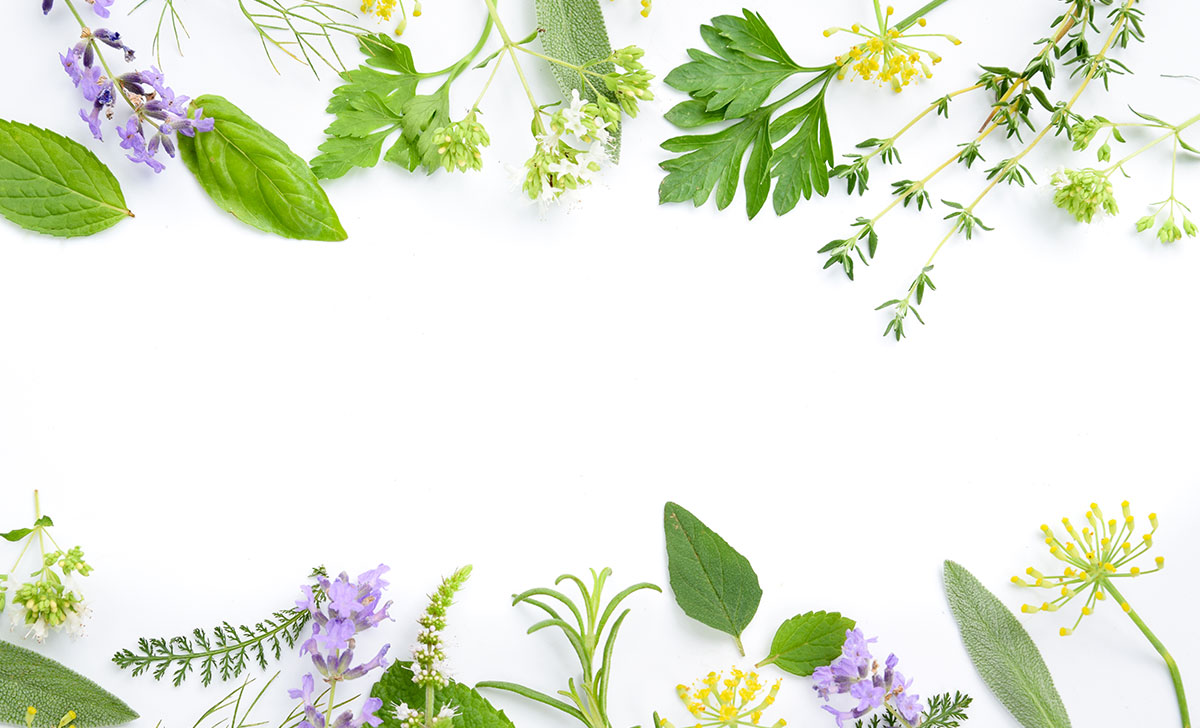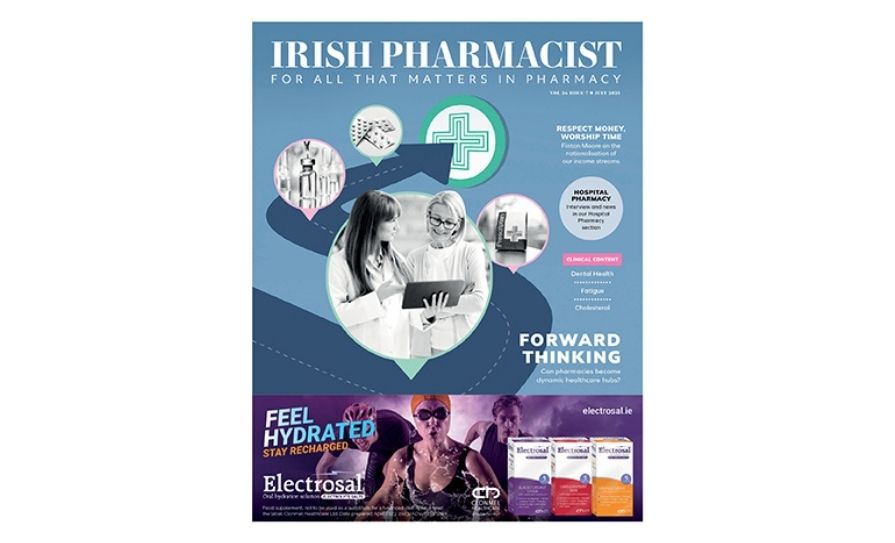Dr Des Corrigan Reviews The Evidence For A Number Of Herbal Alternatives To Hrt Products.
Recent media publicity about shortages of some HRT products suggests that shining a light on herbal alternatives might be a help to pharmacists and their patients. Apart from the two herbal medicinal products recognised by the EMA as having indications related to the menopause, namely Black Cohosh and Sage Leaf, there are other possibilities such as Agnus Castus, Soy Isof lavones and Red Clover.
Extracts of Black Cohosh rhizome have a Well-Established Use as an herbal medicinal product for the relief of menopausal complaints such as hot flushes and profuse sweating, according to the Community Herbal Monograph (CHM) approved by the EMA. That Well-Established use designation under the Medicines Directive is based on the results of extensive clinical trials. Despite its undoubted effectiveness, the use of Black Cohosh has not been without controversy due to reports linking the plant to liver problems. Indeed, under ‘Special Warnings’, the CHM advises caution in patients with a history of liver disease and use must be stopped if patients taking Black Cohosh develop symptoms such as tiredness, loss of appetite, yellowing of the skin and eyes, or severe stomach pain with nausea and vomiting, or dark urine suggesting liver injury. The product should not be used together with oestrogens or in breast cancer patients without medical advice.
Among the several indications for Sage Leaf, the CHM lists an indication as a traditional herbal medicinal product for the relief of excessive sweating. Thus, the HPRA has given traditional use registration to a product containing Sage Leaf dry extract for the relief of menopausal hot f lushes and excessive perspiration, exclusively based on long-standing use.
More recent work strengthens the evidence base, starting with a 2011 paper in Advances in Therapeutics describing the results of an industry-sponsored open clinical trial of a tablet made from an extract of fresh sage. There was a statistically significant 64 per cent decrease in the total score of intensity-related hot f lushes, and a significant 43 per cent reduction in the physician-rated Menopause Rating Scale (MRS) after eight weeks.
There was another trial reported in the International Journal of Reproductive Biomedicine in 2019, again using the MRS measuring hot flushes, night sweats, panic, fatigue and concentration. Although there were significant decreases in the Scale after four weeks, it is not clear how this small study was randomised or if it was placebo-controlled. Another better- quality, though still small-scale, study was reported in 2020 in the Journal of Family Medicine and Primary Care. Groups of post-menopausal women were given either a sage tablet three times a day, or placebo for three months. The MRS significantly decreased, as did the Pittsburgh Sleep Quality Index, in the sage group. Another industry-sponsored RCT was reported in the journal Heliyon in 2021. This Swiss study looked at the effect of fresh sage leaf extract in tablet form using the MRS and a hot flush severity score (HFS) as outcome measures. The MRS was significantly reduced by 39 per cent, and the HFS by 55 per cent. While all these studies have limitations, there is a consistency in their findings that leads me to believe that sage would be an option for some women experiencing the really unpleasant symptoms of the menopause.
At first glance, the inclusion of Agnus Castus on the list of possible alternatives might seem surprising, because the four products registered by the HPRA to date are listed as traditional products for Premenstrual Syndrome (PMS). Indeed, the CHM approved by the EMA includes a Well-Established Use for the treatment of PMS for a dry extract prepared with 60 per cent alcohol based on RCT data.
Other extracts, tinctures and the herb itself have a traditional use indication “for the relief of minor symptoms in the days before menstruation (premenstrual syndrome)”. A systematic review in Archives of Women’s Mental Health in 2017 highlighted the fact that Agnus Castus was also effective in treating Premenstrual Dysphoric Disorder (PMDD), which is a more extreme form of PMS involving marked emotional distress and/or a significant negative impact on women’s functioning. The possibility of using this plant in menopausal women arises from a 2019 paper in the Korean Journal of Family Medicine describing a randomised, double-blind study comparing Agnus Castus extract with placebo in two groups of 26 women with menopausal symptoms. The outcome was evaluated using the Greene Scale involving 21 items under five main headings, namely anxiety, depression, somatic items, vasomotor dysfunction, and sexual dysfunction.
The mean scores for total menopausal disorder, anxiety and vasomotor dysfunction were significantly lower in the treated group than with placebo. There was no difference in levels of somatic complaints, depression and sexual dysfunction. Obviously, this is a case of ‘more work needed’, but this plant looks as if it is worth considering.
A group of phytochemicals collectively called phytoestrogens have received a lot of research attention over the years. The main molecules are isoflavones, chiefly from Soya beans and also from red clover, as well as lignans from linseed. The evidence for the value of these compounds is mixed, to say the least. For example, two reviews published in 2021 found no significant effect in post-menopausal women of soy isoflavones on C-reactive protein levels or on biochemical markers of bone metabolism, respectively, whereas a 2017 systematic review and meta-analysis of three industry-sponsored studies showed a statistically and clinically relevant reduction in hot flushes in women given 80mg of Red Clover extract per day for three months, compared to placebo.
It appears, therefore, that if the shortage of HRT products persists or re-occurs, then you do have some evidence-based alternatives to discuss with anxious patients
The Cochrane Review on phytoestrogens dates back to 2013 and could do with an update. It found that only five RCTs could be included out of a total of 43 reported studies. There was no difference in rates of hot flushes between women taking a Red Clover extract and placebo. However, in the case of soy isoflavones, four trials suggested that extracts with high levels (>30mg/day) of an isoflavone called genistein consistently reduced the frequency of hot flushes. Reassuringly, in the light of concerns that have been raised, there was no evidence that any of the phytoestrogens tested caused oestrogenic stimulation of the endometrium or of the vagina.
The importance of an adequate level of genistein also emerged from a 2014 review in the American Journal of Clinical Nutrition and the general value of soy isoflavones on hot flushes was demonstrated in a 2015 meta-analysis of 10 studies in the journal Climacteric, which found a significantly greater reduction in the frequency of hot flushes compared to placebo.
It appears, therefore, that if the shortage of HRT products persists or re-occurs, then you do have some evidence-based alternatives to discuss with anxious patients. The fact that there is an evidence base should reassure you that discussing or even recommending these alternatives is not indulging in wishful thinking or quackery.







